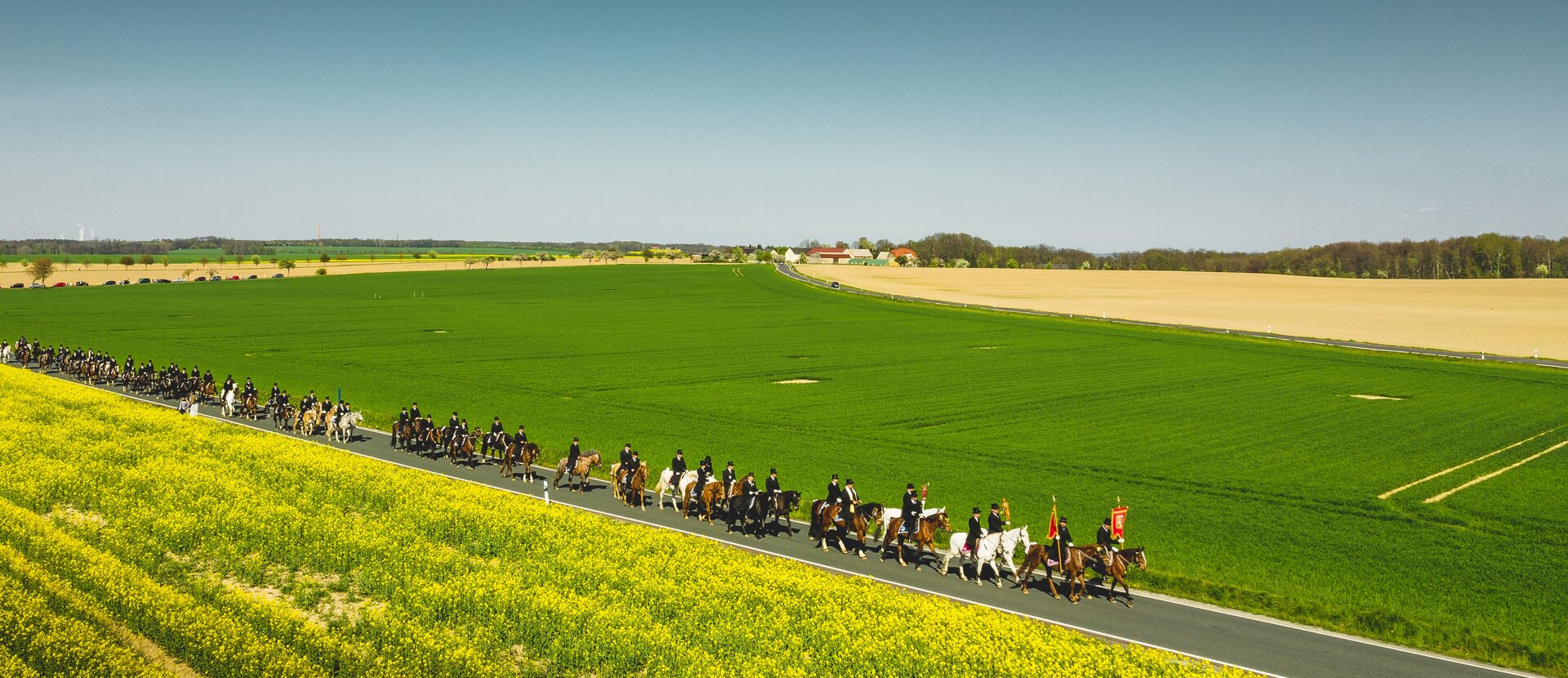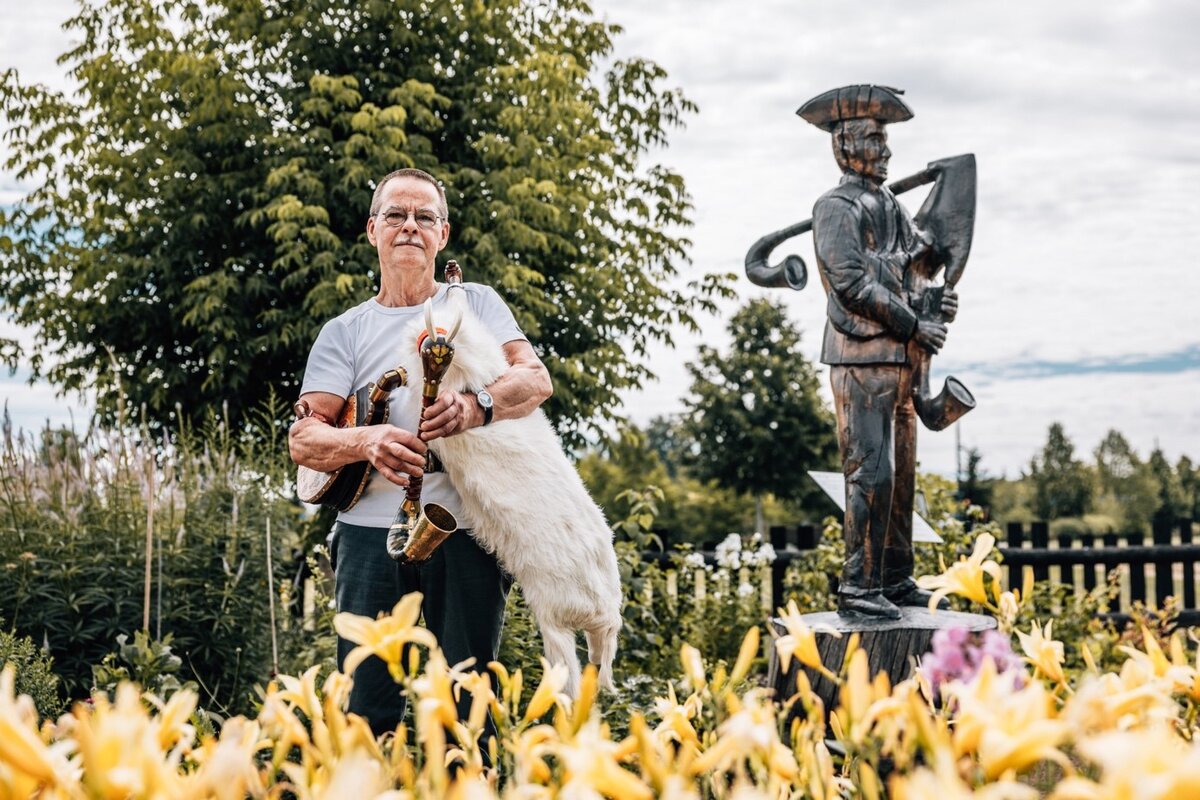Anyone who thinks the bagpipes are only native to Scotland is mistaken. Because in the middle of Europe, in Upper Lusatia, the black and white bagpipes have been played almost continuously for 400 years. Wolfgang Kotissek from the Sorbian Folklore Ensemble Schleife e.V., who not only plays the bagpipes but also the small and large three-stringed fiddle and has been teaching these traditional Sorbian folk instruments since 1975, knows this very well. Born in Leipe in the Spreewald, he has found his second home in Upper Lusatia, in Halbendorf in the parish of Schleife. "I like life here in the parish. Perhaps the best way to see how colorful and livable Lusatia is is to look at the Sorbian customs that define cultural life throughout the year. All generations and all trades, of which we still have 50 different ones here in the village, are involved. You can feel this cohesion - and it characterizes the people who live here.
But it is also the varied and historically unique cultural landscape of Lusatia that Wolfgang Kottisek can't get enough of. Three UNESCO sites can be found here in a very small area: the Fürst Pückler Park in Bad Muskau, the Upper Lusatian Heath and Pond Landscape Biosphere Reserve and the Muskau Arch Geopark. From lowlands to low mountain ranges, Lusatia has everything to offer. A scenic jewel, although coal mining has left its mark on it for centuries: "'God created Lusatia - and the devil put the coal in it', goes the saying that aptly captures how close blessing and curse have always been here," says Wolfgang Kottisek. "Many villages had to make way for mining, many young people left the region. The fact that Sorbian culture, its language, traditional costumes, customs, songs, music and dance, not only survived all these changes but is experiencing a revival again says a lot about the people who live here - and hopefully also about those who, like me, have lost their hearts to Lusatia."






